15 Blog Post Ideas That Will Actually Help You Make Sales

Editor's Note: We are pleased to feature a post from our guest writer, Jessica Mehring, the founder of Horizon Peak Consulting. Jessica combines sales-focused copywriting with long-form content creation to help her clients turn white papers, guides and e-books into clients and revenue. Follow her on Twitter at @horizonpeak and connect with her at HorizonPeakConsulting.com.
"You write blog posts for businesses like mine? Wow! Tell me what I need to budget to hire you.”
Five years ago, that wasn’t an unusual response from a prospective client.
Three years ago, the conversation started going like this:
“Well, I can hire a guy on Elance for $4 an hour to write blog posts for my business.”
And in the last year or two:
“Blogs don’t work. I’m not getting any leads from them. They’re not improving my website traffic. I’d rather spend the money on hiring a new sales rep.”
If you’re expecting me to tell you that blogs are awesome, that you should listen to the HubSpot reports about how marketers who prioritize blogging are 13 times more likely to see positive ROI, and companies who blog receive 97% more links to their website …
Well, you’re in for a surprise.
Blogging is dead.
At least, the way businesses have been doing it is obsolete.
Publishing a blog week after week, day after day, or month after month isn’t enough. Not today. Not with content fatigue running rampant.
Blogging just to blog – that’s dead.
Blogging with a purpose – now that will still get you results, as I’m about to show you.
But first: How much thought are you putting into your blog topics? Are you planning them well in advance? Are you considering your sales cycle at all when you plan your content?
If you’re not getting results from your blogging efforts, my guess is this: you haven’t thought enough about those questions.
So before I launch into 15 blog post ideas that will help you make sales, I want you to stop and think about the following questions. No, really. Just pause for a second, do your business a favor and answer these questions:
- What result do you want to get from your blog? What do you want your readers to do after they’ve read your post? Do you want them to click a buy button? Sign up for an email list? Pick up the phone? You only get to choose ONE action for each post – so think carefully.
- What are you doing to promote the blog posts that you write? Are you posting them to social media? Sharing them with influencers? Adding them to social sharing sites? Including a link to your latest post in your email signature?
- What are you trying to sell? Are you pushing a particular offering right now? Do you have a launch coming up? Are you having a sale?
Yeah. This is the minimum amount of thought you should be putting into your blogging program. Cranking out a 400-word opinion piece on a Friday afternoon for a Monday launch is a waste of your time.
When you put thought into your blogging, that’s when the magic starts happening.
The answers to those three questions should determine much of your editorial calendar, and they should guide your topic development as well. Here’s why:
- Results focus your work. The result you want to get from your blog will focus your writing and help you lead your reader from headline to action.
- Readers validate your work. The promotion you’re doing to get your blog posts out into the world will make the difference between people actually finding your blog post, or your post floating around in virtual outer-space – so you’ll need to pick a topic that will resonate with the people hanging out in those places online.
- Sales guide your work. The product or service you are trying to sell will determine the timing of your posts, and narrow the appropriate topics down considerably.
Now, when you go through the following list of 15 blog ideas, keep those answers in mind. And you can learn how to align your answers with the following blog topic ideas in this free workbook.
Pick a few topics to lead up to a new product launch.
Showcase an existing product in a new way.
Write about the results your customers are getting from using your product or service.
But whatever you do, start with the goal in mind: to grow your revenue.
1. Behind the Scenes
Benefit: Personal connection with your audience.
Share a behind-the-scenes look at your company, your team or the making of your product. Take your reader on an adventure and show them a side of your business they don’t normally get to see.
Check out how David Siteman Garland does it here in this post.
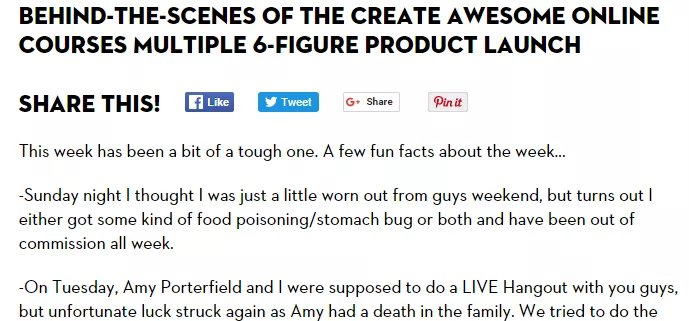
Bonus: If you’re writing this post before the launch of a new product, this is a great opportunity to give people a sneak peek at what’s coming up.
2. Honest Product/Service Comparison
Benefit: Reveals how your product or service stands out + builds trust if done in an authentic way.
Many businesses have tried and failed to use this blog topic to generate buzz. Here’s what they did wrong: they were slimy about it.
You don’t need to trash-talk your competition to write up a comparison post. In fact, the more honest and authentic you are about it, the more trust you’ll build with your audience.
Let’s take ConvertKit as a shining example of how to do this right. In their recent post entitled 5 Reasons You Should NOT Switch from MailChimp to ConvertKit, they walk the reader through what ConvertKit excels at, what MailChimp does differently than they do -- and who would not benefit from using ConvertKit as an email marketing platform.
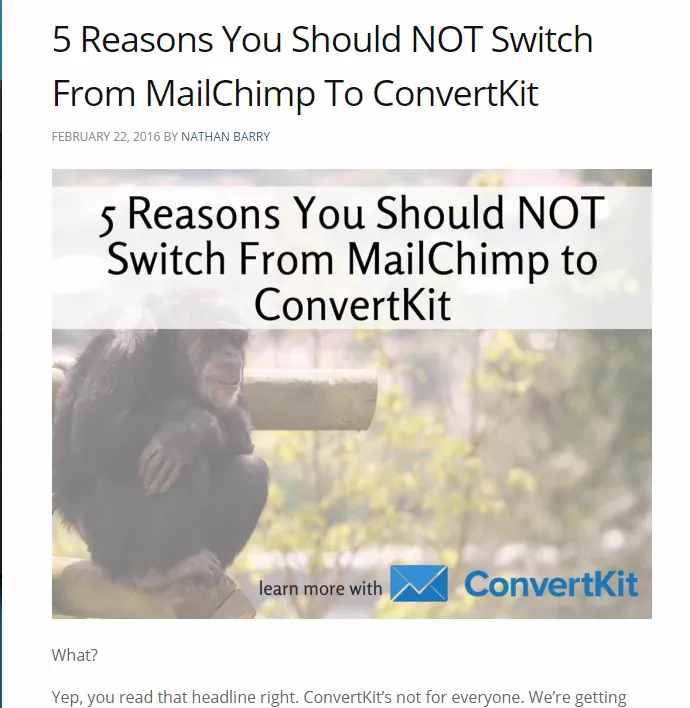
3. Ultimate Guide
Benefit: Build authority + give audience a tool they can use.
I’m seeing these types of blogs more and more, and I’m loving them. Ultimate guides are long, in-depth blog posts that serve as a resource for your reader.
Renée Warren’s KISSmetrics post, The Ultimate Guide to Startup Marketing, is a great example of this.
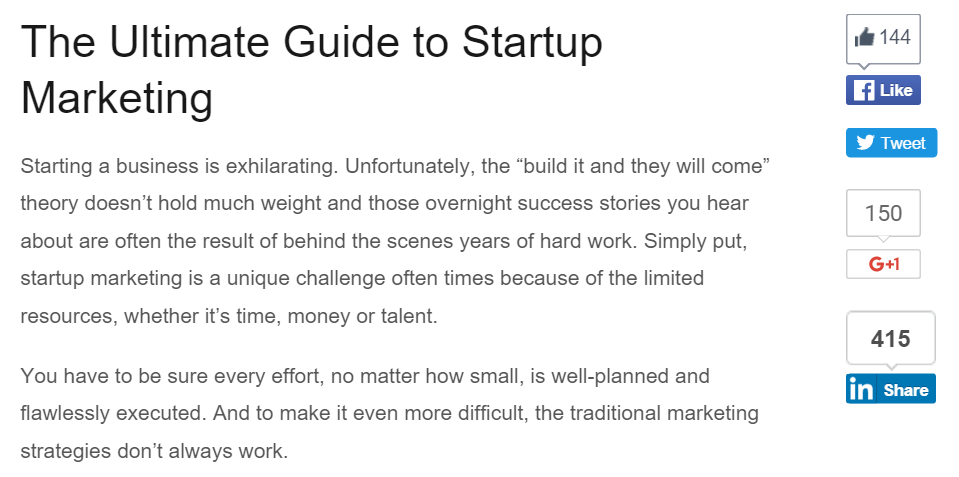
I recently had a conversation with a group of copywriters and marketers about these “ultimate guide” blog posts, and something interesting came up.
The way people read these posts is a bit different.
Most of the people I spoke to said that they rarely read these right away, but rather file them away using Instapaper or Evernote to read later when they have more time.
Here’s something even more interesting, and something that will help your sales efforts: Readers also keep these in-depth posts on file because they refer to them again and again.
If you want to build your credibility as the go-to expert on a certain topic, it stands to reason that it’s a smart move to write an “ultimate guide” blog post that people refer to over and over.
4. Controversial Standpoint
Benefit: You’ll be memorable! Make a splash…
Being controversial can get you a lot of attention. Just make sure it’s the right attention. Pick a standpoint that your target buyers can get behind.
To get a bit meta, here’s a post from Copy Hackers founder Joanna Wiebe about picking a fight in your copy -- and boy does it pick a few fights of its own!

5. Resource List Post
Benefit: The audience will reference it over and over, putting your brand in front of them again and again.
If you’ve been in business for a while, you’ve probably come across a lot of helpful tools, apps, websites and the like. Why not compile a list of those resources for your readers?
To make it stand out, however, make it in-depth and valuable. Tell your audience why you added each resource to the list, how you personally use the resource and how they might benefit from it in their own lives/work. Add screenshots, too!
Just please don’t call it a listicle (it sounds too much like a male body part – sorry!).
Here’s a great example from Content Marketing Institute:

6. FAQ
Benefit: SEO value + overcoming objection + being helpful in general.
You likely receive the same questions over and over in your business. You might even have an FAQ page on your website to address them.
Believe it or not, FAQs can make compelling blog posts, too -- especially when you approach them from a sales standpoint:
What do your target buyers need to believe or understand in order to make that purchase?
Keep this question in mind as you decide what FAQs to include in this blog.
Check out how James Altucher used FAQs to drive this blog post: FAQ on How to Become an Idea Machine.
I encourage you to be thorough with these types of blog posts, however. Don’t just answer the questions -- go into detail. Share stories and give examples. Make sure your reader walks away with the belief and/or understanding they need to take the next step with you.
7. Explore a Trend or Present New Research
Benefit: Build authority + draw buyers in with a topic they’re already looking for more information about.
Do you spot a trend that will impact your target buyers? By all means, write about it. Not only will it help you build authority in your space, it may help new buyers find you in search results.
Just choose your topic carefully. Don’t simply explore a trend that you’re interested in. Explore one that your target buyers are interested in -- or better yet, explore a trend that will directly impact them.
This Retention Science article on the meshing of marketing and artificial intelligence personally had me riveted for two reasons:
- I love technology and pay a lot of attention to trends in that arena. Internet technology, artificial intelligence, drones, 3D printing, sensors, IoT -- I gobble up tech news like a starving man gobbles up a steak.
- Things happening within the marketing industry directly impact my business.
This article was a perfect blend of something that interests me + something that impacts me as a reader.
Now I pay a lot more attention to Retention Science. In fact, I signed up for their mailing list!

Or here’s another blog topic idea that will get you similar results:
Present current research in a way that benefits your target buyers.
This article, Microsoft Office 365 is beating Google Apps in enterprise adoption – Gartner research, takes new Gartner research and presents it in a way that might speak to IT companies that serve enterprise businesses.
You can do the same thing for your business. Do a Google search for research in your industry or your target buyer’s industry. When you find something interesting, write a blog post about the research and how it specifically affects your audience.
8. Solve a Specific Problem
Benefit: Build the “like and trust” factors + kick off the reciprocity principle.
When I’m working with a client on standalone content like an e-book, guide or white paper, this is a technique I highly recommend for lead gen and growing a mailing list. But it can actually work really well in a blog, too.
When you solve a specific problem for your reader without charging them for it, their internal, unconscious dialogue goes something like this: “If I’m getting so much value out of this free content, imagine what I’ll get from their paid product or service!”
It also triggers the reciprocity principle. That is, we feel obliged to give back to people who have given to us.
Either way, it generates good will from your readers and makes them more open to hearing what else you have to say.
Here’s a great example from SumoMe. In this blog, they solve one specific problem for their target audience: how to get more website traffic.

SumoMe is extremely generous with their knowledge, here. They also give the reader a few different options to reciprocate or engage by:
Trying their software

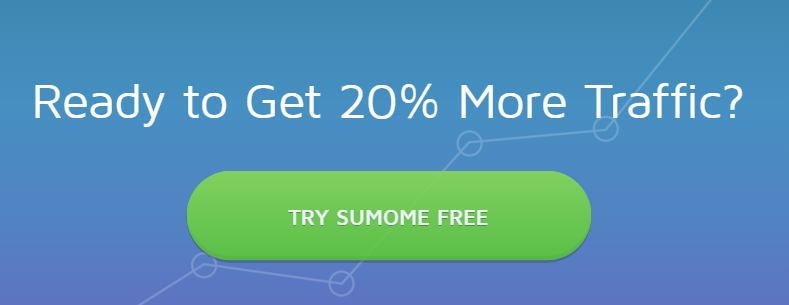
Downloading their content upgrade

Leaving a comment with a tactic they missed (very last sentence of the post)

9. Case Study
Benefit: Social proof.
Most businesses don’t think about turning their case studies into blog posts. They write their case studies, put them into pretty PDFs, put links to those PDFs on some obscure page on the website and pray that buyers go download them.
Well that’s just silly.
Case studies are a great way to spread social proof in a controlled and brand-reinforcing manner. So why banish them to the back corners of your website? Sure – go ahead and make a pretty PDF out of your case study. But put that case study into a blog post, too!
This way you’ll …
- Stretch the social-proof-rich content farther
- Put it into an alternative format that some readers would find easier to consume
- Get more SEO value out of it
Here’s an example from Crazy Egg that will knock your socks off.
The benefits of social proof can’t be overstated. Turn your case studies into blog posts to gain those benefits for your own business.
10. ROI Numbers Breakdown
Benefit: Overcomes objections + gives the reader something to take to the person with the checkbook.
You don’t need a big sales team to help your target buyers understand the value of your product or service. You can make a huge impact by sharing the important numbers in a blog post.
Look at this post from BarnRaisers entitled 15 case studies prove ROI of Facebook ads.
The numbers they present make a pretty compelling case for using Facebook ads.
Oh, and they just so happen to offer social media marketing services.
A prospective buyer of BarnRaisers’ services can easily see how advertising on Facebook leads to revenue.
And if they need sign-off from someone higher-up at the company in order to purchase those services, the buyer now has actual numbers to help make their case.
11. Intro Epic Content
Benefit: Lead the customer to even more free value + build your email list.
“Epic content,” also known as standalone content, is in-depth and typically downloadable. It can be a guide, a white paper, an e-book, or even a workbook. Most of the time, it’s “gated,” meaning the reader has to provide their email address in order to download it.
Some people write epic content as a blog post and include a link at the end to download it as a PDF, as I did in this post on the evolution of content marketing. That’s fine to do – but if you’re trying to take the reader on a journey to become a buyer, think about using a blog post as an introduction to the epic content.
Here is an example of how most companies do this. They write a brief overview and then tell readers to fill out a form in order to get the epic content.
Meh. Not very compelling, if you ask me.
I wonder how that’s actually working for those businesses.
You can do better.
Look at how Amy Porterfield does it here. The podcast and accompanying blog post provide massive value on their own – but then it all leads to an epic content download.
Now that’s a one-two punch of value!

When readers click to download that epic content, they get a pop-up asking for their name and email address.
Boom.
Amy has provided a TON of value and grown her email list.
12-15. AIDA Series
Benefit: Lead the reader by the hand down the path to a sale.
AIDA is a classic copywriting formula that stands for:
- Attention
- Interest
- Desire
- Action
Though this formula has been around since the dawn of copywriting, I have to give credit to fellow copywriter Lacy Boggs for helping me understand how it works in regard to blogging.
Using AIDA as a guideline, create a series of four posts that lead the audience down the path from initial attention to taking action.
Post 1: Attention
Hook the reader; challenge their assumptions.
This blog is the most important in terms of getting readers to come back and read the next three posts in the series – so make it compelling, spend extra time writing your headline and promote the heck out of this post.
See how Tim Grahl does this in this attention-grabbing post leading up to the launch of his course: The Truth About the New York Times and Wall Street Journal Bestseller Lists.
Post 2: Interest
Get the reader’s brain engaged by expanding on why your product or service is the ideal solution.
The Attention post brought up some compelling points. Expand on them here in the Interest post. Help the reader understand how your product or service solves the reader’s unique problems.
In the post I just mentioned above by Tim Grahl, he brings up the point, “…[F]ocus on the reader … Make it easy to buy and easy to read.” In a post following that one, How to Find the Most Popular Parts of Your Book, he goes into detail about one way to do that: using compelling parts of the book in your marketing.
Post 3: Desire
Drive home the benefits of your product or service. Make them want what you’re offering.
Help the reader imagine life with your solution. This is a great place to include case studies and testimonials.
See how Natalie MacNeil does it here in her post, 5 Business Investments You Can’t Afford Not to Make.
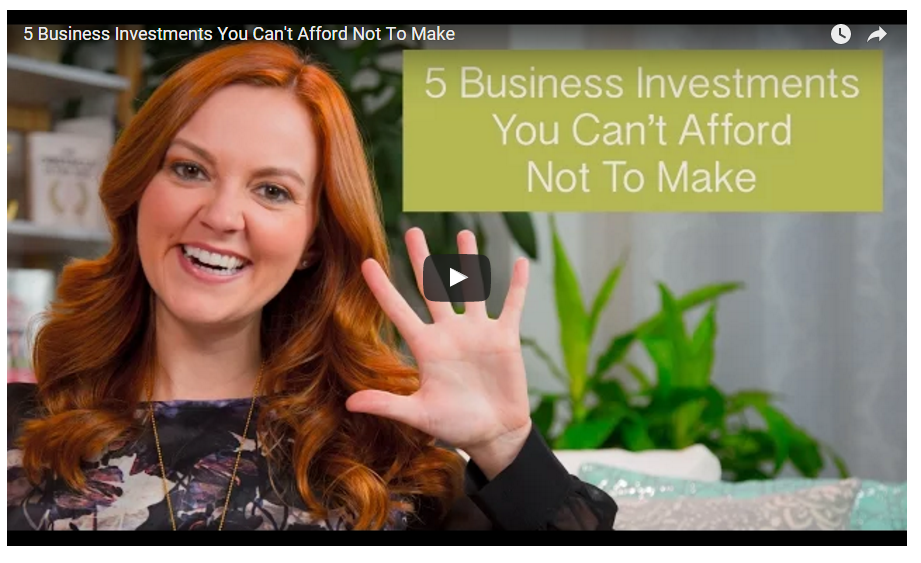
You’ll notice that she adds a dash of Action to this one – but I believe it falls firmly into the Desire category because she builds desire with the initial content (the video) and then leads into the call-to-action with a “while we’re speaking on this topic, here’s something you should buy” statement.
Post 4: Action
Ask for the sale.
In this post, you’re make a direct request for the reader to take action. This is another great place to include case studies and testimonials – but this blog will be much more direct in asking the reader to buy.
AppSumo is amazing at these Action posts. Bookmark their archive for a crash-course in moving your reader to take action.

Your Turn
You now have 15 ideas for blog posts to write. But wait! No matter what you choose to write about, make sure you have these three things in mind:
- What results do you want from your blog post?
- What are you trying to sell? (This doesn’t have to be a paid product/service – you could be “selling” joining your mailing list.)
- How will you promote this blog?
Blogging without a purpose is a waste of your time. Put some thought into what you’re doing so you will actually see results from the time and money you’re spending to maintain a blog.
Take your blogging efforts from waste-of-time to sales machine. Click here for a free workbook that will help you align your business goals with all 15 of these blog topic ideas – and start driving sales with your blog.













